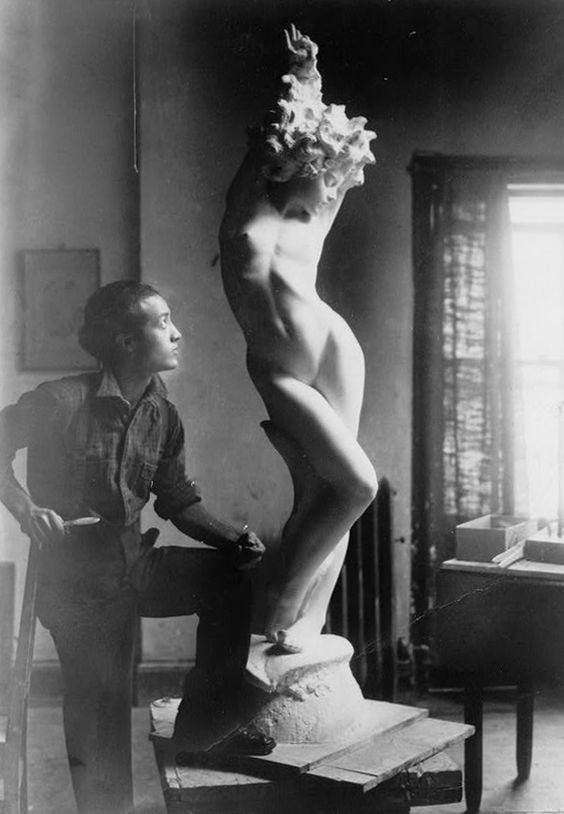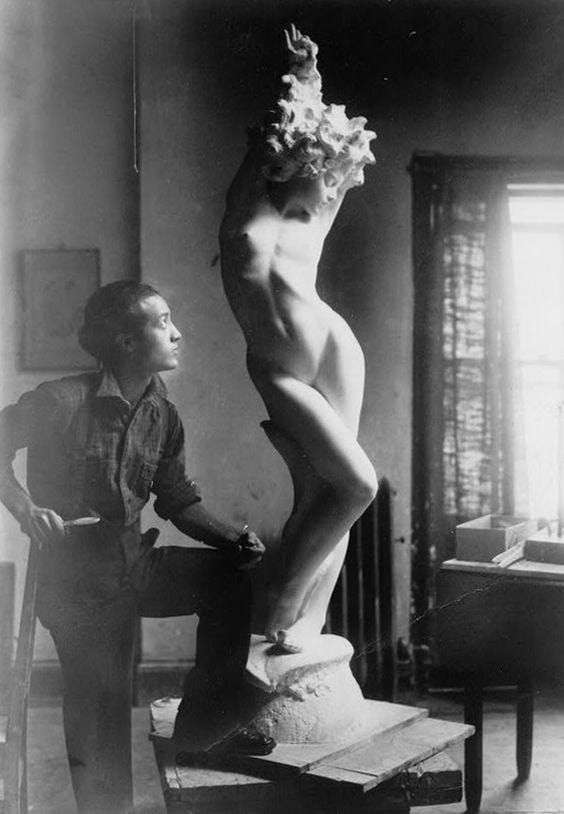(Traducción en español al final *kissy face* ❤️)
Lately between conversations the fact that I have a blog has been brought up more than once. Out of curiosity or politeness, most people ask “What do you write about?” suddenly I find myself clueless, speechless even. What. Do. I. Write. About?
Some artists struggle to outline their work, give it a price or call it a name. I went to a book presentation last year with my friend Sergio, it was a poetry book, which — if you ask me — makes it even more interesting. The author was Italian but his book was written in Spanish.
“As you can see, I didn’t do the translation. I did it once and hated it. For some reason when translating my own work, I can’t bring myself to take the same risks I would with any other text and so she — the translator — did a better job”, he explained.
The author also talked about his metaphors with rocks and trees, but those didn’t stick with me the way that comment did.
Art is a metabolic process between the artist and their audience, a process that involves what is prior to its exhibition and what occurs in the wake of its contemplation, the space lying between is what we make of it, interpretation. Figuratively, the closer we are the more detail we are capable of witnessing, meaning, the more essence we survey. With this in mind, I as an artist or writer cannot fully comprehend the work I’ve done, despite the authorship, I will never be the audience, the “space lying between” does not exist for me because I’ve created it. I am obliged to hand over my work to the world; it doesn’t matter if it’s read or if it’s not, if it’s loved or if it’s hated, if it’s seen for what I think it is or if it’s morphed into something else. The artist can dictate their art essence, however it is more or less subsumed by the interpretation of the audience.
Perhaps the best person to ask “What is the meaning behind a painting? a choreography? a poem? a book?” isn’t the one guilty of its making but the one victim of it.
Read prologues, please
The preface, the note of the translator, the note of the author, the prologue to the English edition, the prologue to the German edition… and oh! The prologue. Before college, I used to skip them all, how silly I was! Until one professor highlighted their fundamentality, how most books worth reading are just as heavy on those pages as on the rest.
I have said before (click here to read Emilly with double “L”) I usually read them at the end, when I’m under the impression I have made up my criteria.
Then I read everything, I scan even the flyleaves and it is almost as if I’m conversing with someone about the book, the one in charge of the prologue or the note of the translator exposes their arguments about the nucleus and I reply with my own.
Since doing this, I have come to the realization that the best way to lend your soul to art for it to be a vessel, is to discuss the space lying between as a way to narrow it. Frankenstein (1818), A Portrait of the Artist as a Young Man (1916), The Metamorphosis (1915), and Carmilla (1872) are a few examples of books I have fallen in love with just right after reading the first 20 pages.
Read my latest post!!
Traducción
Últimamente, ha salido entre los temas de conversación el hecho de que tengo un blog. Quizás por curiosidad o por educación, las personas suelen preguntar “¿Acerca de qué escribes?” y de un momento a otro me quedo sin palabras. ¿Acerca. De. Qué. Escribo?
A algunos artistas les resulta complicado delinear su trabajo, asignarle un precio o nombrarlo. El año pasado fui a una presentación de un libro con mi amigo Sergio, era un libro de poesía que – si me preguntas a mi – lo hace aún más interesante. El autor era italiano pero su poemario estaba escrito en español.
“Como se podrán dar cuenta, yo no hice la traducción. Alguna vez la hice y la detesté. Por alguna razón al momento de traducir mi propio trabajo, no me permito tomar los mismos riesgos que tomaría si fuera cualquier otro texto, entonces ella – la traductora – lo hizo mejor de lo que yo pude haberlo hecho”, explicó.
Asimismo, hablo acerca de sus metáforas con rocas y árboles, pero ninguna de ellas fue capaz de impresionarme tanto como ese comentario.
El arte es un proceso metabólico entre el artista y la audiencia, un proceso que concierne a todo lo ocurrido previo a su exhibición hasta lo que evoca al momento de ser contemplado, el espacio que yace entremedio podríamos denominarle como la interpretación. Figurativamente, mientras más nos acerquemos más detalles seremos capaces de discernir, de más esencia somos testigos. Siguiendo esta misma línea de pensamiento, yo como artista o como escritor no puedo comprender mi trabajo en su totalidad, el “espacio que yace entremedio” no existe para mí dado que soy yo quien lo ha creado. Me encuentro obligada a ofrecer mi trabajo al mundo, sin importar si es leído o no, si es amado u odiado, si es visto por lo que creo que es o si es transformado en algo más. Si bien, el artista es capaz de dictar la esencia su arte, esta padece de mayor o menor subsunción de acuerdo a la interpretación de la audiencia.
Quizás la mejor persona a quien preguntar acerca del significado detrás de una pintura, una coreografía, un poema, un libro; no es aquella culpable de su fabricación, sino aquella víctima de ella.
Lee los prólogos, por favor
El prefacio, la nota del traductor, la nota del autor, el prólogo a la versión inglesa, el prólogo a la versión alemana … y ¡ah! El Prólogo. Antes de entrar a la universidad, solía saltármelos todos. Hasta que un profesor insistió en su carácter fundamental, cómo la mayoría de los libros que valen la pena leer son tan pesados en ese par de hojas que en el resto de la obra.
Lo habré dicho antes (haz clic aquí para leer Emilly with double “L”), tiendo a leerlos al final, cuando estoy bajo la impresión de que he constatado mi propio criterio.
Para después leerlo todo, escaneo cada página incluso las flyleaves y es casi como si estuviera conversando con alguien acerca del libro, aquel que está a cargo del prólogo o de la nota del traductor expone sus argumentos del núcleo del libro y yo respondo con los míos,
Tras haber empezado a leerlos, he caído en cuenta que una de las mejores maneras de prestar tu alma al arte a manera de contenedor, es discutir el espacio que yace entremedio en fin de estrecharlo. Frankenstein (1818), Retrato del Artista Adolescente (1916), La Metamorfosis (1915), y Carmilla (1872) son unos cuantos ejemplos de obras de las que me he enamorado en esas primeras 20 páginas.






